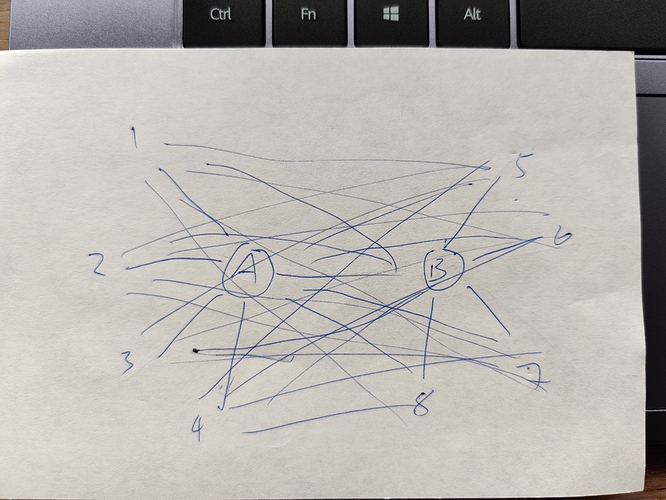I have a syncthing setup on devices in two geographical locations. Devices A,1,2,3,4 are in one location and B,5,6,7,8 are in another. Devices A and B are dedicated to syncthing and are always on. Devices 1-8 are regular personal use pc’s and android devices. As such they can only connect whenever they’re in use, and the androids whenever they’re connected to wifi. Online status is thus unpredictable.
The reason for two dedicated syncthing devices is that the network between the two geographical locations is unstable and slow so having two devices always on lets syncing work properly. For example, devices 1,2,3,4 might be able to complete a sync with device A and each other instantly. They’re not online long enough to sync across the location gap. A then syncs with B slowly overnight, then the changes propagate from B to 5,6,7,8 instantly.
Right now, for each device, device A and B are both set as introducers. So using one sync partnership as an example, each and every device with this folder is connected to every other device. I’m worried that so many devices might eventually develop sync conflicts or if I decommission a device then I have to remove the unused device from every 9 other devices.
So I want to simplify it by having each device only connected to a “main” device. I’m not knowledgeable about syncthing or networking but I was wondering if I could use a hub/spoke layout to setup a folder partnership like this picture.
Device A is one hub. Connected to it are spoke devices 1,2,3,4. All these are in one geographical location. In another geographical location is Device B which is another hub, connected to it are spoke devices 5,6,7,8.
Device A is connected to device B. 1,2,3,4 are not connected to each other. Neither are devices 5,6,7,8. This way the devices list for each spoke node would only have either hub A or B. Only the hubs themselves would have multiple devices in the device list. Each hub is not aware of the other hub’s devices. There are no introducers.
I have two questions
-
Does it make sense to separate my partnerships into a hub/spoke layout, based on my circumstances? (Geographical seperation, slow network across location span, intermittently online nature of devices 1-8)
-
Will this work from a syncthing standpoint? Can one folder be synced amongst devices, some of which do not know about each other? Again this picture is what I am talking about. Circles represent devices, lines represent partnerships. All this is for one syncthing folder/partnership.


